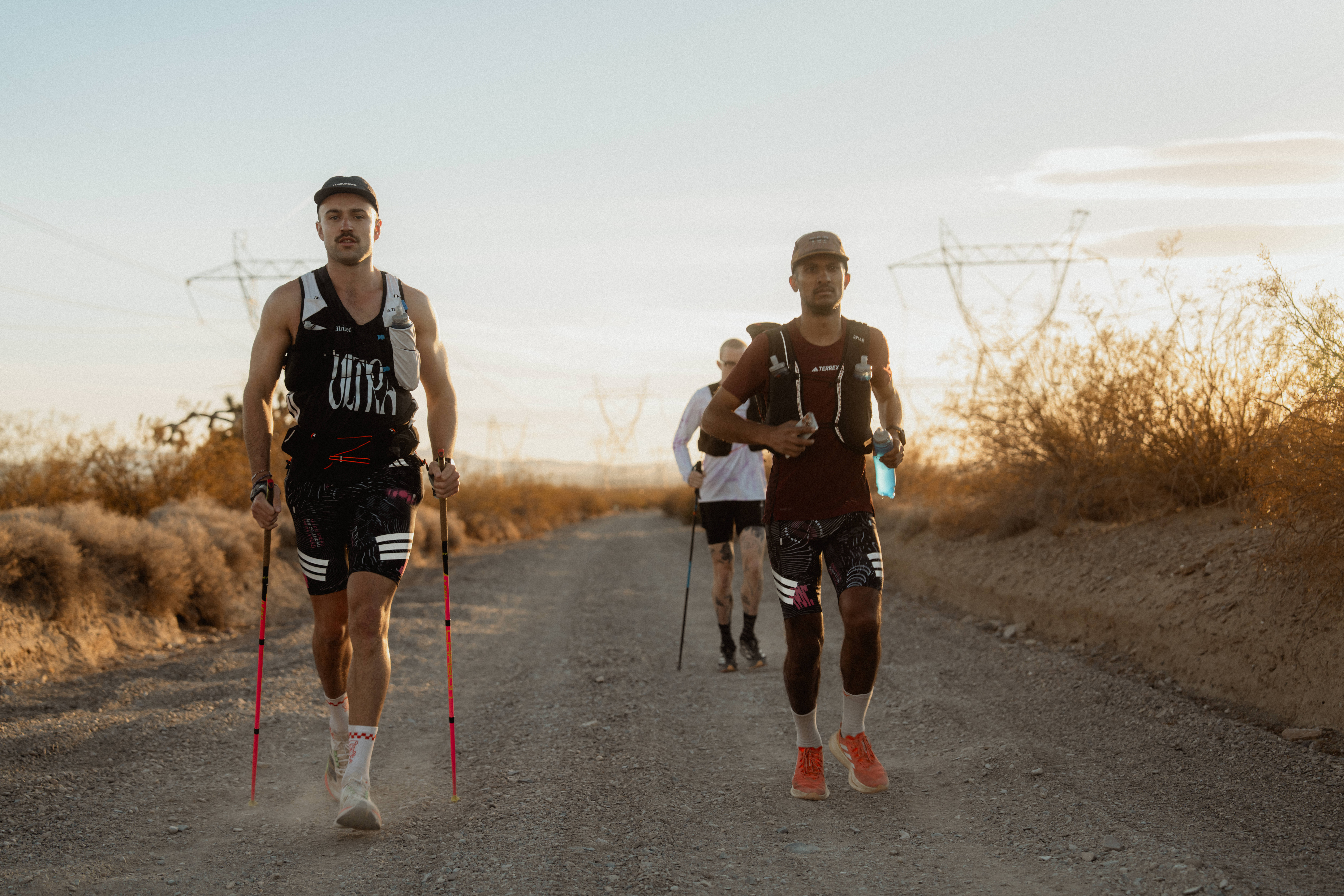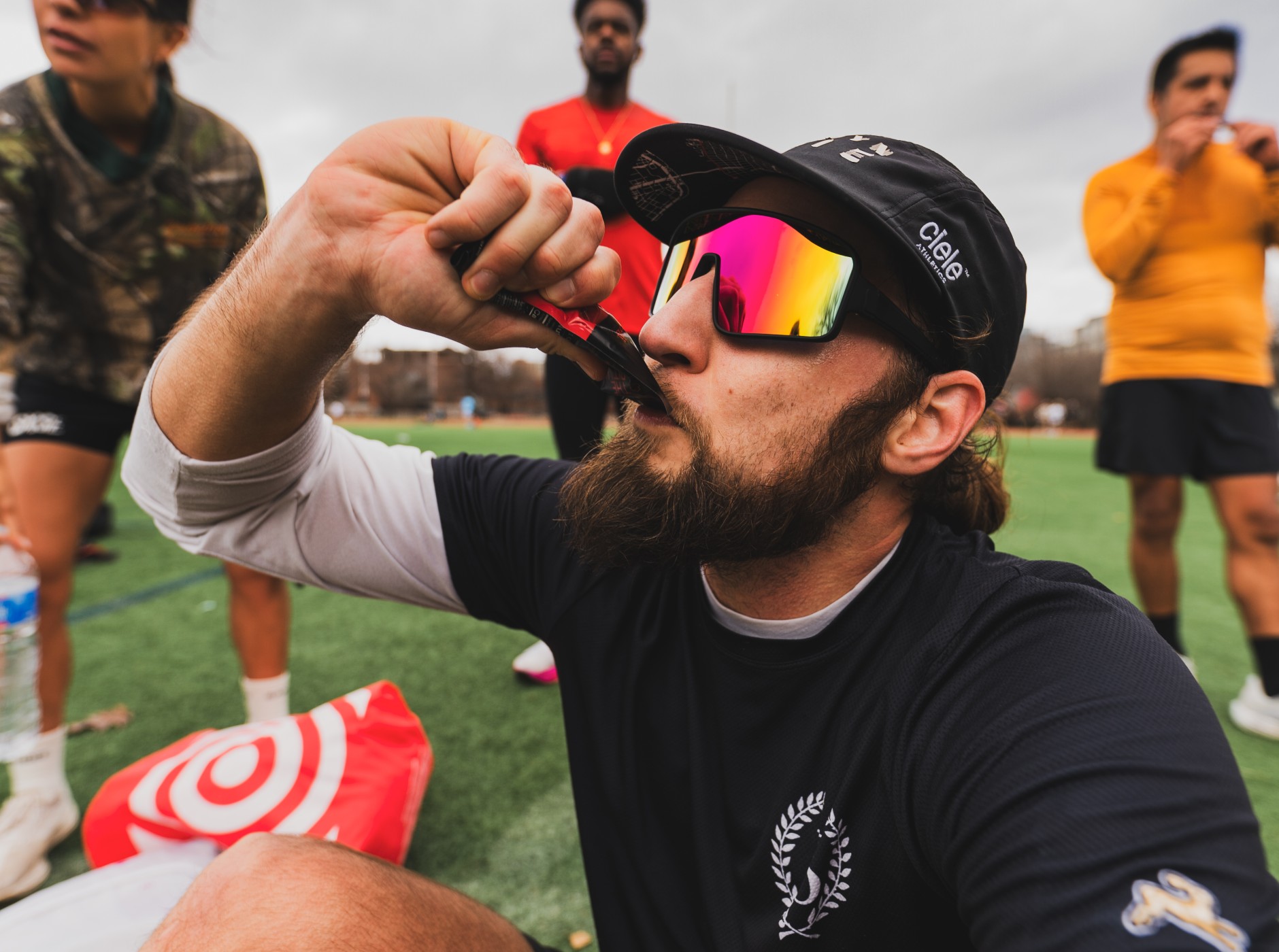Running has often had a fuelling problem. Misconceptions have long been flying around the sport: where people chase faster times through the 'lighter equals faster' fallacy; where people simply don't know how to adequately fuel their training's nutritional needs; where there simply is not resource to understand why fuelling properly is so important.
Clearly, nutrition and health have a strong relationship with one-another, just like nutrition and injury, and ultimately: nutrition and performance. In this vein, we sat down with physiotherapist Luke and nutritionist Samantha from The Running Room to talk through common issues, what to be careful of and what you can do to keep yourself strong and fuelled and injury-free in your running.
---
We hear lots about how things like overtraining, lack of strength training or poor footwear can risk causing injury or health issues. But poor nutrition can also be a factor, can you tell us more about the relationship between fuel and injury?
Under-fuelling or missing key nutrients can compromise performance, recovery, and bone health, increasing the risk of both short- and long-term issues.

What are the most common forms of injury or health issues that you see that are most-likely caused by poor nutritional practices?
The most common nutrition-linked problems I see in runners include:
Bone stress injuries (stress fractures): these are strongly associated with low energy availability and consequently RED-S (relative energy deficiency in sport). The risk becomes even higher when combined with low calcium or vitamin D intake.
Poor recovery or persistent fatigue: without adequate carbs and protein, muscles struggle to repair and adapt.
Hormonal disruptions: in women, under-fuelling can lead to menstrual irregularities or loss of cycle (a red flag for low energy availability). In men, under-fuelling can lead to reduced testosterone production.
Compromised immunity and frequent illness: not eating enough or lacking key nutrients (e.g. iron or zinc) can leave the immune system vulnerable.
Tendon issues caused by a chronic state of inflammation due to dietary issues.
What about the most common mistakes you see runners making with their diet and nutrition?
Training fasted or skipping meals (especially breakfast or post-run recovery meals).
Underestimating energy needs - not matching intake to output.
Focusing too much on “eating clean” and restricting carbohydrates or dietary fats too much.
Ignoring iron and calcium needs, particularly for female and plant-based runners.
Under-snacking - relying on just three meals a day.

Does the type of training we are doing affect how we should be fuelling?
Absolutely. Here’s a quick guide:
Long runs: need more carbohydrates both before (to start topped up) and after (to restore glycogen). Any runs >70 mins should be fuelled during with easily absorbed carbohydrates (30-90g/hr depending on duration & intensity).
High-intensity or speed sessions: carbs are our bodies primary higher intensity fuel source. Make sure you are fuelling carbs before and a combination of carbs and protein post to replenish glycogen and promote recovery.
Easy/recovery runs: lower intensity = lower carb need, but you still need energy. I am a strong believer in fuelling ALL runs regardless of duration and intensity.
Strength training: prioritise protein intake, especially post-session, and don’t neglect carbs—they help drive adaptation.
What about the differences between women and men? Do nutritional needs vary significantly?
Yes, and not just because of size or weight differences. Some key distinctions:
Women are more prone to under-fuelling—often unintentionally.
Menstrual cycles affect energy needs and nutrient metabolism, especially around ovulation and the luteal phase.
Iron needs are significantly higher in premenopausal women—which is critical for oxygen transport and endurance.
Low energy availability (LEA) affects both men and women but is often under-recognised in male athletes.

What are the signs that we can be on the look out for if we suspect we’re not fuelling correctly? Are there any ways to tell?
Watch for:
Persistent fatigue or burnout
Frequent illness or slow healing from injuries
Poor sleep, low mood, or irritability
Lack of progress in training
Disrupted menstrual cycles (in women)
Increased injury rate, especially bone-related
If you're noticing any of these, it's worth reviewing your diet with a professional.
Practical tips to help reduce risk of injury through poor nutrition/fuelling
ALWAYS fuel before training, but especially if it’s longer than 45 minutes or includes intensity.
Always refuel post-run with a mix of carbs and protein—aim to eat within 30–60 minutes.
Snack smart: add high-calorie snacks if training volume increases (e.g., nut butter on toast, smoothies, yogurt + granola).
Don’t train fasted regularly—it increases stress hormones and can impair recovery.
Include bone-friendly nutrients daily: calcium, vitamin D, protein, and phosphorus.
Track your cycle (if applicable) and adjust fuel and iron intake accordingly.
Don’t wait to feel hungry—when you’re training hard, appetite can lag behind need.
---
You can find The Running Room at their website or Instagram.





